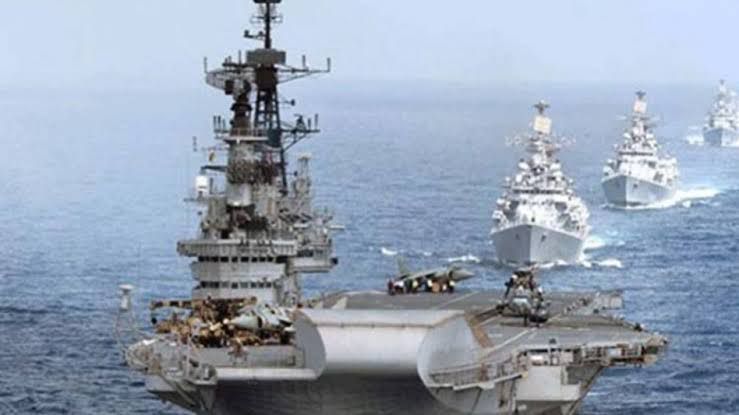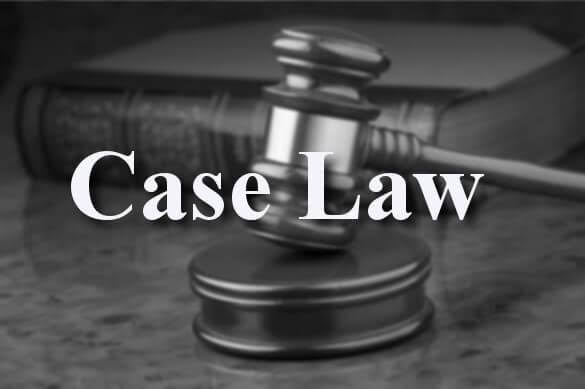Author: Rashi Mishra, Prestige, Department of law
To the Point
The Indian Navy War Room Leak Case, which came to light in 2005, served as a stark reminder of the vulnerabilities in India’s national security. It revealed a troubling pattern of top-secret defense documents being leaked, thanks to a network of both active and retired military personnel along with civilian defense middlemen. A staggering 7,000 classified documents—covering everything from military strategies to procurement plans—were discovered to have been compromised from the Directorate of Naval Operations and the Air Headquarters. Many of these documents were labeled “Top Secret” and “Confidential,” and they were illicitly copied, stored on USB drives, and handed over to defense agents for profit. The enormity of the breach, coupled with the involvement of high-profile figures—some connected to international defense lobbies—made this one of the most significant espionage cases during peacetime in India’s history. The fallout led to extensive legal, administrative, and international actions, and it continues to be a pivotal reference point for national security law and policy in India.
Abstract
The Navy War Room Leak Case came to light when Air Force Intelligence found a pen drive belonging to Wing Commander S.L. Surve during a routine internal check. This device held highly sensitive military information that traced back to the Naval War Room in South Block. Investigations revealed that Commander Vijendra Rana, Commander V.K. Jha, and Captain Kashyap Kumar were all implicated in the matter. Each of them held important positions and had both access to and leaked these documents. Retired naval officers like Captain Salam Singh Rathore and Commander J.S. Kalra acted as middlemen, passing the information to arms dealers such as Abhishek Verma, Kulbhushan Parashar, and Ravi Shankaran—the latter being related to the then Chief of Naval Staff. While the leak had the potential to impact significant defense deals, including the Scorpaena submarine contract, a direct legal connection was never established. This incident sparked nationwide reforms in military data management and led to the use of special constitutional provisions to dismiss personnel without court-martial proceedings. The scandal even reached beyond our borders, with extradition processes starting in the UK and gaining attention from international media. Despite arrests, trials, and one conviction, the case remains only partially resolved, as some of the accused are still at large or have not faced punishment.
Use of Legal Jargon
The case revolved around several legal provisions:
Official Secrets Act, 1923: The main charges were based on Section 3(1)(c) (for transmitting harmful state secrets) and Section 5 (for keeping classified information).
IPC Section 120-B: This was invoked for criminal conspiracy among those involved.
IPC Section 409: This section pertains to officers who are found guilty of criminal breach of trust.
Article 311(2)(c), Constitution of India: This allowed for a quick dismissal when state security was at risk.
Section 15, Indian Navy Act, 1957: This was used along with the principle of “President’s Pleasure” to dismiss serving officers without a court-martial.
Extradition Law: This process began at the Westminster Magistrates’ Court and was reviewed by the England & Wales High Court under the UK-India extradition treaty, but it was ultimately rejected due to insufficient evidence and delays in procedure.
The Proof
1. Discovery and Forensics: IAF agents found a 128 MB Kingston Jet Flash pen drive at Surve’s home. A forensic analysis conducted in Hyderabad uncovered more than 3,600 pages, including deleted files that outlined war strategies, foreign navy intelligence, and US Navy command-control procedures. Another drive taken from Commander Rana held over 10,000 pages of naval documents, featuring “Top Secret” scripts for Pakistan’s war games.
2. Confidential War-Room Files: The CBI chargesheet details war simulations, plans for acquiring submarines, standard operating procedures for the Pechora missile rollout, and joint force protocols, along with defensive strategies for Sir Creek that were linked to BSF locations. A civilian middleman named Parashar had personally exchanged pen drives with Surve three times and with Rana twice.
3. Network of Collusion: Retired officers Rathore and Kalra faced accusations of leaking classified information to Parashar, Verma, and Shankaran. While direct bribery wasn’t proven, the CBI connected the leak to the Scorpaena submarine deal, highlighting an unfair advantage in the bidding process. We discovered fourteen key documents in Rathore’s possession.
4. Supporting Evidence: Investigators found USB-port logs, emails coordinating the transfers, and call records that hinted at institutional protection linked to Admiral Prakash’s household. The absence of certain drives suggests there may be undisclosed evidence. Allegedly, operators employed “honey-trap” tactics through Rajrani Jaiswal to target Surve, although these leads were not pursued criminally.
Case Laws
State of Rajasthan v. Kashi Ram, (2006) 12 SCC 254
This case really brought to light how crucial circumstantial evidence can be in criminal trials. The Supreme Court ruled that if a series of circumstances clearly points to the accused’s guilt, a conviction can stand. In the War Room Leak case, much of the evidence was circumstantial—like USB logs, pen drive recoveries, and email trails—rather than relying on direct witness testimony or confessions. This principle really bolstered the prosecution’s case, especially since there were no live witnesses or direct proof of bribery.
K.M. Nanavati v. State of Maharashtra, AIR 1962 SC 605.
While this case is well-known for being a jury trial, its significance lies in clarifying the balance between executive and judicial powers in personnel issues. It became a key reference point when the Government used Article 311(2)(c) to dismiss several officers involved in the leak without conducting departmental inquiries. This provision is meant for situations where national security is at risk, allowing them to sidestep the usual due process in this instance.
Union of India v. Tulsiram Patel, AIR 1985 SC 1416
In this case, the Supreme Court made it clear that government employees could be dismissed without a formal inquiry if it was deemed necessary for national security. This ruling had a direct impact on the Ministry of Defence’s ability to quickly remove serving officers like Commander Rana and Captain Kashyap Kumar without any delay, under the President’s Pleasure doctrine.
CBI v. Ravi Shankaran & Others, Westminster Magistrates’ Court, UK (2011)
This extradition case brought to light some serious procedural issues within India’s investigation and trial systems. The British court decided against extraditing Shankaran, pointing out the absence of credible and admissible evidence, along with concerns about delays and India’s track record on fair trials. This situation really emphasized the urgent need for India to update its cross-border legal processes and align with international standards for mutual legal assistance.
Satyam Scandal Case: CBI v. B. Ramalinga Raju (2015)
While this case isn’t related to defense, it does share some common ground in terms of intricate documentation, digital evidence, and the importance of whistleblowers and internal audits. It highlights how crucial forensic auditing is in tackling white-collar and digital crimes—a vital approach employed by the CBI during the War Room Leak investigation.
Conclusion
The Navy War Room Leak case marks a significant moment in India’s military, legal, and diplomatic landscape. It laid bare the vulnerabilities in digital security within the armed forces, particularly as we move towards a future of paperless intelligence sharing and global defense procurement. This breach not only put sensitive information about India’s naval strategies, procurement plans, and international defense partnerships at risk, but it also potentially gave an unfair edge to private arms dealers, jeopardizing the transparency and integrity of massive deals like the Scorpène submarine project.
On the legal front, this case has reignited discussions about the shortcomings of the Official Secrets Act of 1923, highlighting the pressing need for updated cyber-espionage legislation. The government’s decision to invoke Article 311(2)(c) and the Indian Navy Act of 1957 to dismiss officers without trial sparked controversy, yet many viewed it as a necessary step to prevent further breaches. On the international stage, the inability to extradite key suspects like Ravi Shankaran emphasized the need for improved bilateral cooperation and more robust documentation in future extradition efforts.
Even with various arrests, trials, and administrative changes, true justice in this case remains elusive. Some suspects are still on the run, the complete extent of the leaked documents is still unknown, and systemic issues continue to pose risks. Nevertheless, this case has spurred significant reforms in military data protection, digital surveillance, and whistleblower policies, paving the way for more resilient defense operations in our increasingly digital world.
FAQ’s
Q1: What was leaked in the War Room case, and how serious is it?
A: The leak involved a staggering 7,000 pages of highly classified documents, covering everything from war game strategies and submarine acquisition protocols to missile deployment plans and India’s naval defense strategies for conflict zones like Sir Creek and the Indian Ocean. The gravity of this situation isn’t just about the sheer amount of information; it’s about the strategic implications—if this data falls into the hands of foreign intelligence, it could jeopardize national defense readiness and threaten India’s security for years to come.
Q2: Who were the key players involved, and how did they operate?
A: The network comprised active officers like Commander Vijendra Rana, Commander V.K. Jha, and Wing Commander S.L. Surve, along with retired officers such as Captain Salam Singh Rathore and Commander J.S. Kalra, plus civilian arms dealers like Kulbhushan Parashar and Ravi Shankaran. They downloaded sensitive information onto USB drives, erased it using data-wiping tools, and exchanged it during discreet meetings at hotels, clubs, and private residences. Some reports even suggested the use of honey traps and bribes to sway important individuals.
Q3: How did Indian law enforcement uncover the leak?
A: The Indian Air Force’s internal intelligence agency stumbled upon a suspicious pen drive during a routine inspection at Wing Commander Surve’s home. Forensic experts managed to recover deleted files from the device, revealing the full scope of the leak. This discovery prompted coordinated investigations by the CBI, IB, and RAW, ultimately tracing the data back to the Naval War Room in South Block.
Q4: Why was India unable to extradite Ravi Shankaran even though there was a treaty in place?
A: The UK’s Westminster Court turned down the extradition request, citing a lack of sufficient evidence, slow investigation processes, and worries about the fairness of judicial proceedings in India. They pointed out issues with procedures, flimsy documentation, and India’s inability to present a strong case for prosecution. This situation underscored the challenges India faces in handling cross-border espionage cases, even with a formal extradition treaty in place.
Q5: What legal measures were taken against the accused?
A: The legal actions included invoking the Official Secrets Act of 1923, along with IPC Sections 409 (criminal breach of trust), 120-B (criminal conspiracy), and the Indian Navy Act of 1957. Some officers were dismissed under Article 311(2)(c) of the Constitution without any inquiry. However, aside from one conviction, many of the accused were either released on bail, acquitted due to insufficient evidence, or fled the country, resulting in a situation of only partial legal resolution.




